My previous post introduced the reader to Canyon de Chelly and some of its cultural riches.
In this post, I am featuring the amazing wild cacti growing all over the place. In fact, if you don’t watch your step (easily done when you hold a camera to your face trying to find the perfect vantage point), the cactus spines will quickly remind you to do so. Mostly, I wore my sneakers and was able to pull off the needles from the tough fabric. But, when I wore my sandals, the outcome was often a bit more painful. Sometimes, I found myself with little pricklies (the short hairlike spines are called “glochids”) embedded in the skin of my fingers.
Cacti and rock ledges seemed to go hand-in-hand and gifted us with memorable scenes. Here, yellow and orange-flowering plants share the same space:
In this multi-colored grouping, the cacti seem to arrange themselves into a scalloped pattern:
There were tall bush-size cholla (“choy-ah”) cacti (Cylindropuntia whipplei), many of them covered with fruit already:
This was the only cholla plant I found that was still blooming:
The Navajos consider the cholla fruit inedible but use the dried, hollow stems to make rainsticks.
The majority of the cacti plants in the Canyon were Pricklypear cactus (Opuntia spp.), mostly budding or blooming; no prickly pear fruits yet!
I loved finding the various stages of bloom next to each other, from the early bud to the fully opened flower, often buzzing with insects, and even the past-prime flowers. Each had their own unique allure:
But, honestly, I loved the flowers in full bloom the best:
Pink blossoms, in particular, called me for several photo sessions for just the right lighting and various stages of blossom opening. The soft, feminine pink of the blossoms, juxtaposed against the long, dangerous thorns were full of intrigue.
In this patch, the tan grasses with their delicate seedheads tussled by the wind, provide a great contrast to the fleshy cactus bodies and their pink glory crowns:
The fruit of the Pricklypear cactus is sometimes called “tuna” and turns a purplish red when ripe. It is edible (after the tiny spines are removed) and makes a delicious fruit juice or jam. The fleshy cactus pads are also edible but spines and glochids must be removed by singeing them. The pulp can be eaten fresh or cooked. Navajos also use the fruit to make a natural pink dye.
Reference: Wildflowers of Canyon de Chelly by J.L. Turner & C. Turner (2008)

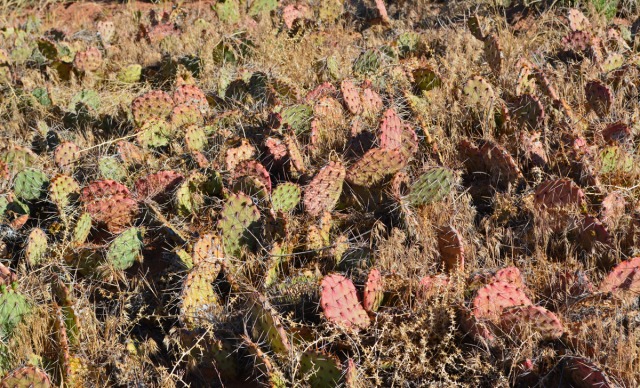
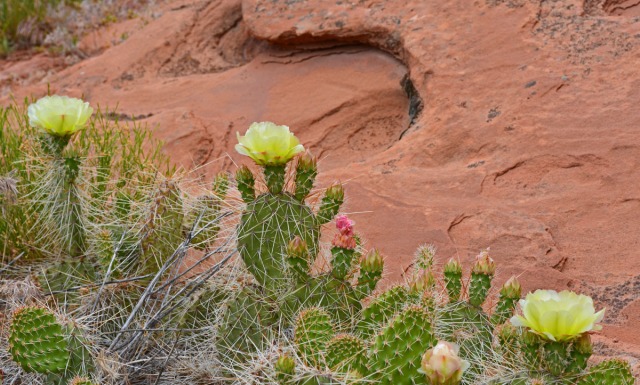

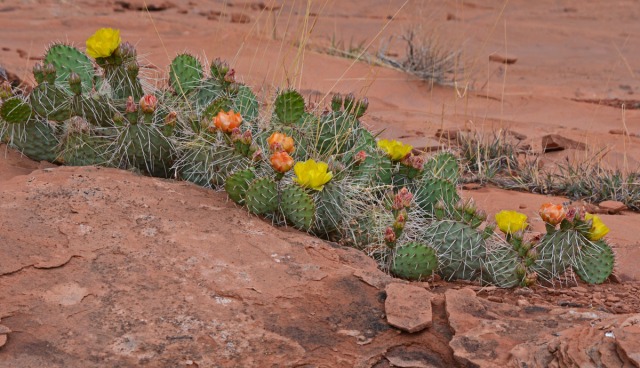

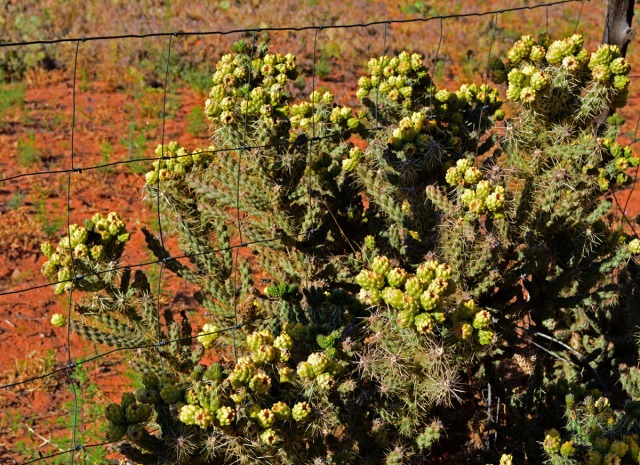
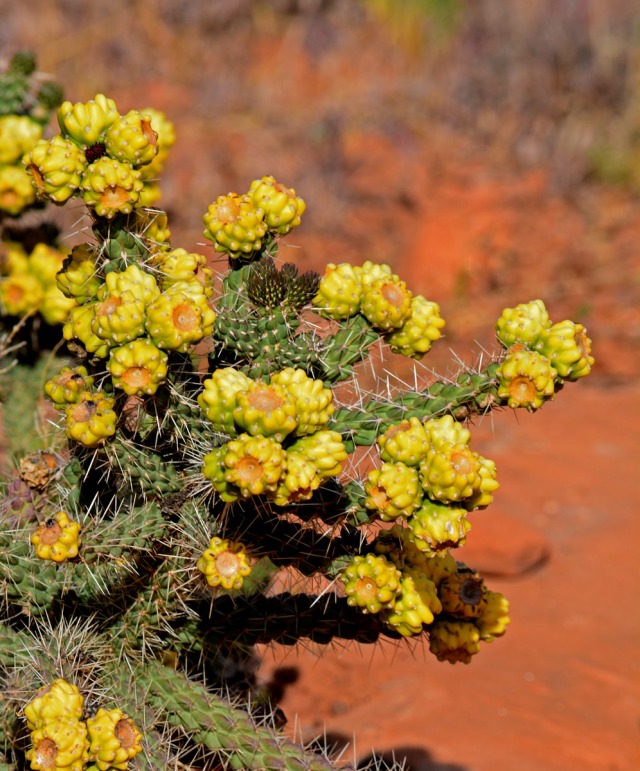
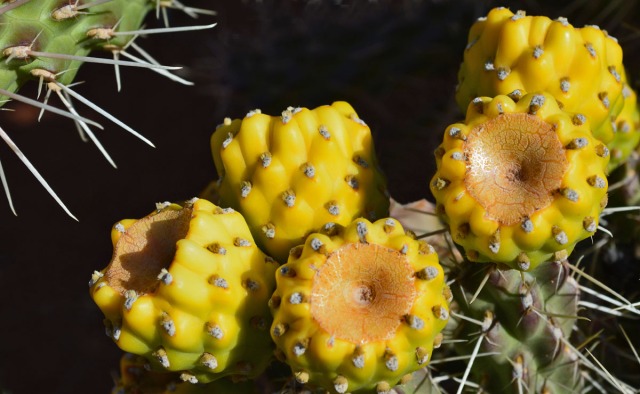
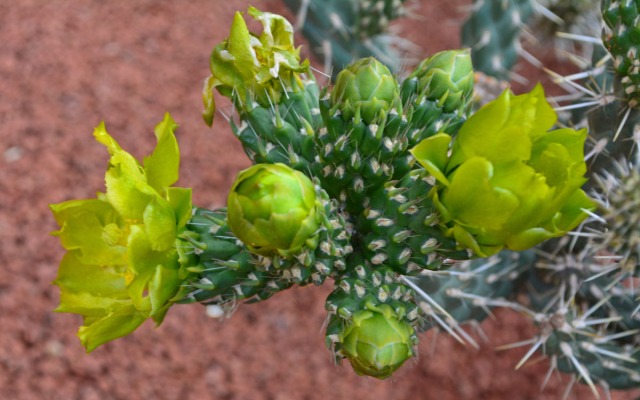
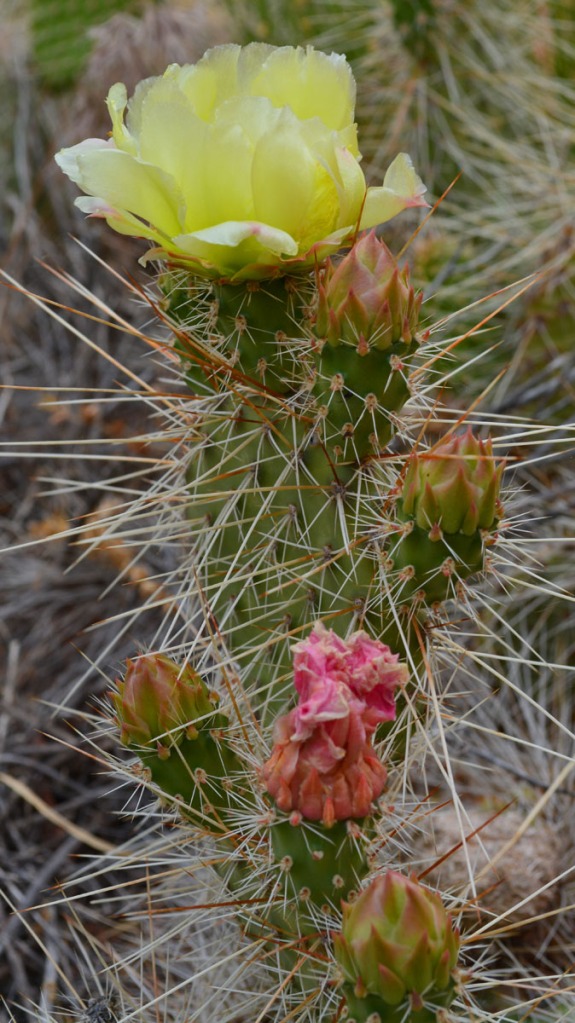

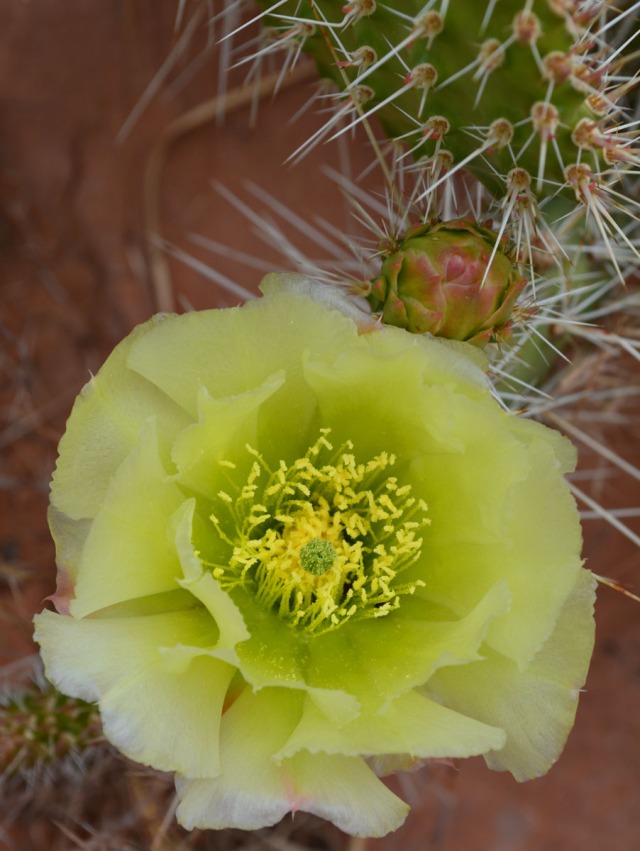
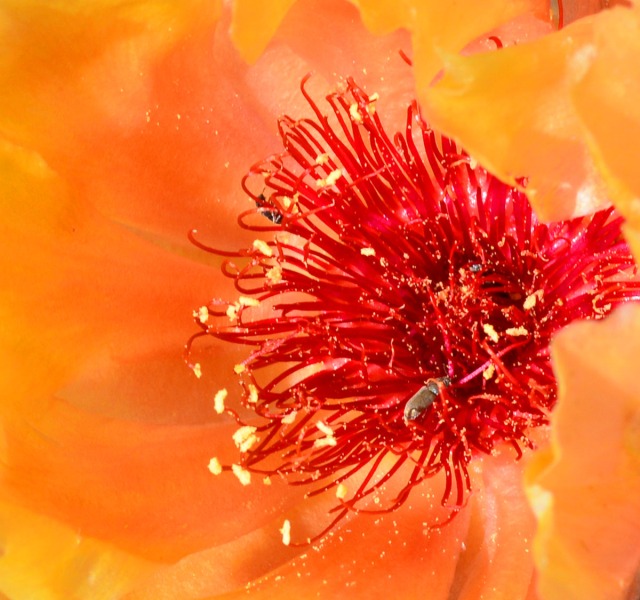


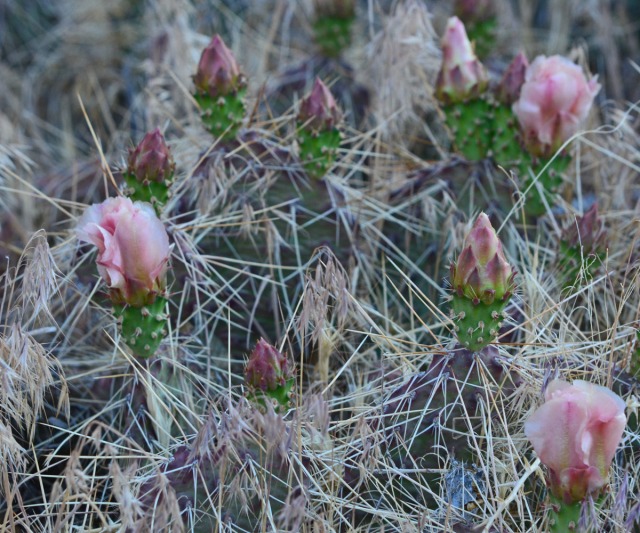
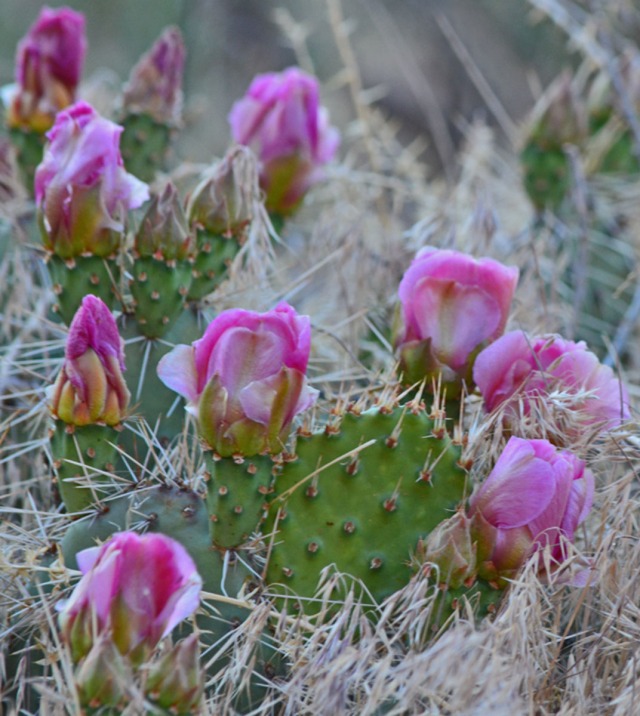
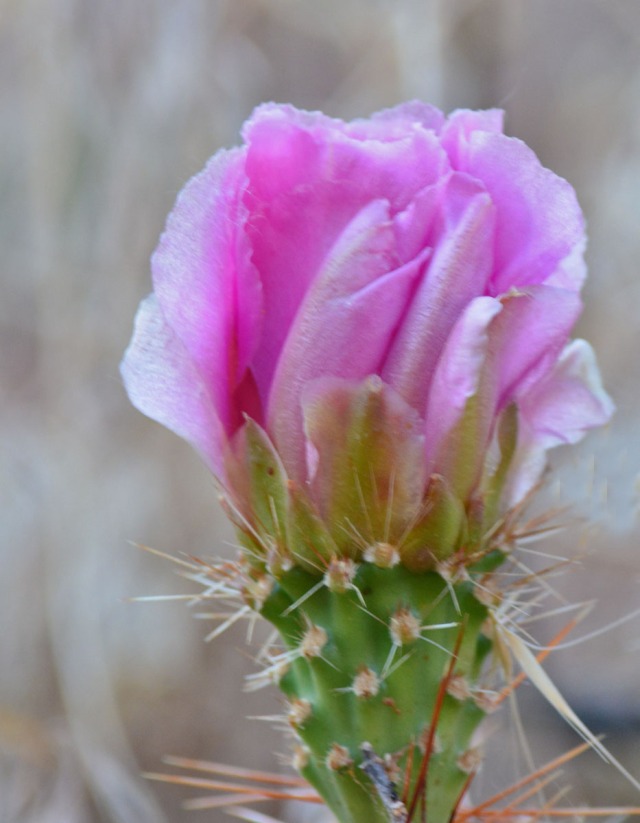

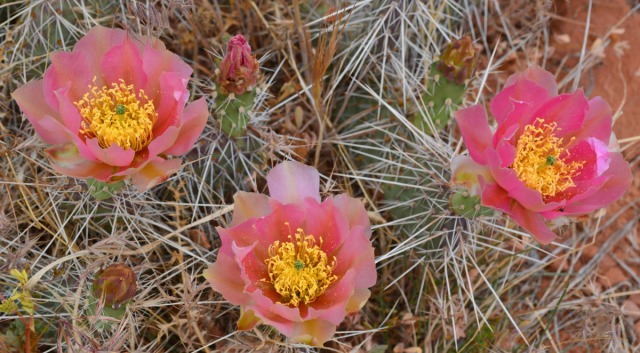

Lovely!!! Made me homesick for the southwest!
LikeLike
Thanks, Glenda. It makes me “homesick” even though the SW is not my home 🙂
LikeLike
I’m a cacti fanatic and these pics seriously have me catching my breath! 😃 GORGEOUS!!
LikeLike
Thank you, so happy you enjoyed the post.
LikeLike
Lovely photo essay!
LikeLike
Happy that you liked it, Sue.
LikeLike
These are gorgeous photos.
LikeLike
Thanks, Cee, thanks for visiting!
LikeLike
LOVE canyon de Chelly and plan visit again in july – great selection!
LikeLike
Good for you – get ready for a hot summer, though 🙂
LikeLike
Indeed, I am used to AZ phoenix summers, and it’s cooler on the floor.
LikeLike
Gorgeous cacti. The blossoms are outstanding. When we were in Quito, Ecuador, we visited the botanical gardens and they had a lovely cacti garden. I took many pictures of them, but my micro sd memory card popped out of my tablet and I think was swept up by the cleaning lady at our hostel. I lost all my photos because I didn’t know how to save them on my tablet. 😦 We have a cactus here called Pitaya. The fruit is delicious. It’s bright purple inside and tastes like a cross between a strawberry and a pear. Yummy!
LikeLike
Oh, so sorry about your camera mishap. I was a little concerned about all that fine red dust, especially when I was changing lenses, but my camera came through without any apparent issues.
LikeLike
I have family in the southwest so I’m lucky to have seen this sort of thing up close and personal. And, yes, those tiny little hairlike thorns are the WORST. Almost impossible to get out, aren’t they? These photos are so beautiful, thank you.
LikeLike
You are so right, the tiny ones are the most difficult ones to remove. Thanks, Barbara.
LikeLike
Such beautiful flowers on these prickly cacti, Annette. In your second pic, they look like little people wearing colourful hats. 🙂
LikeLike
I like that comparison except for the part where it would be a bit difficult hugging these people 🙂
LikeLike
Hmmm…….I guess it would be rather painful. 🙂
LikeLike
Stunning photography. The cacti are so beautiful. Thank you for sharing, I enjoyed this post.
LikeLike
Thank you, Lita.
LikeLike
What beautiful photos. The colours are wonderful and you caught some great angles to show off these prickly customers. It sounds like a painful experience though 🙂
LikeLike
Some pictures come with a price tag….:-)
LikeLike
Lovely pictures of cactus blooms. Living in San Diego, cacti are a daily sight. And you’re right, the small, fuzzy spiny needles are the most painful ones as they get stuck all over your skin.
LikeLike
And not only the beautiful flowers, Annette, but that red, red rock – visceral.
LikeLike
Beautiful pictures. We have 17 acres here in Texas full of them. I gather the fruit and actually drink the juice and/or make it into a sun tea and drink it daily(I have fibromyalgia and it’s natural anti-inflammatory properties help with my pain). I have also attempted to make jelly, but it is more like syrup, but very tasty. Your pictures are absolutely gorgeous.
LikeLike
Thank you, PJ. I had prickly pear juice when I was in Arizona and love the jewel red color and taste of it. I am trying to grow cactus here in Virginia and they have survived two winters so far but not producing enough fruit (yet) to bother with juice or jam. Happy to hear it’s helping you with FM. BTW, do you have Russian (or Autumn) Olive on your land….considered an invasive. Their little red fruit can also be made into a jam or juice (seeds need to be strained off). I heard that the lycopene in Autumn Olive berries is 20x the amount found in tomatoes. A lot of our wild plants are very beneficial.
LikeLike
What a beautiful sampling of the cacti of Canyon de Chelly, Annette. So sorry about the prickly stings though! This is one place I’ve never been that I dream of going. Your photos are wonderful. 🙂
LikeLike
It’s an amazing place, hope you’ll get a chance to go someday.
LikeLike
I hope so too! I will do my best!
LikeLiked by 1 person
Beautiful!!! Thanks for sharing your links. 😊
LikeLike